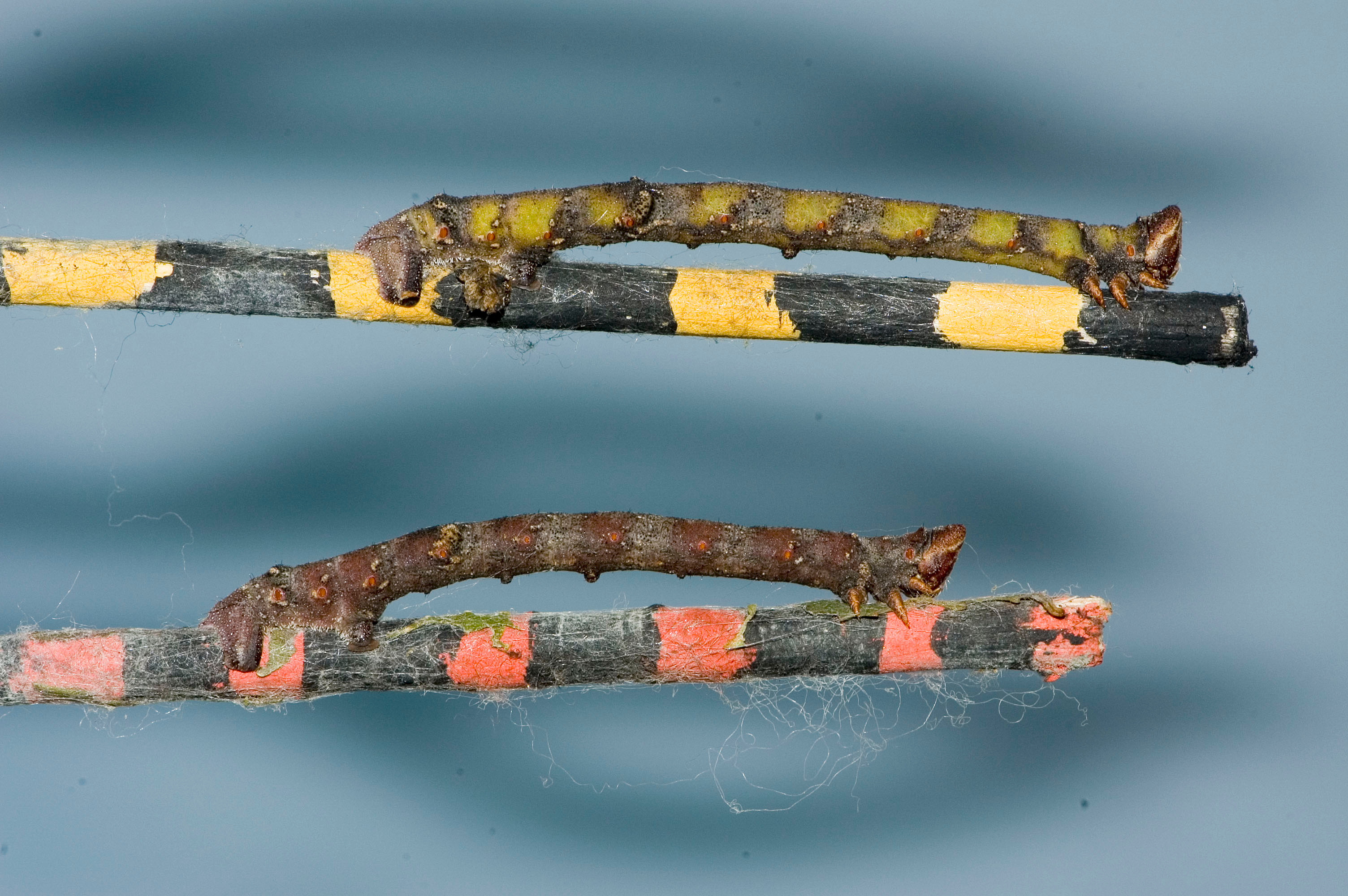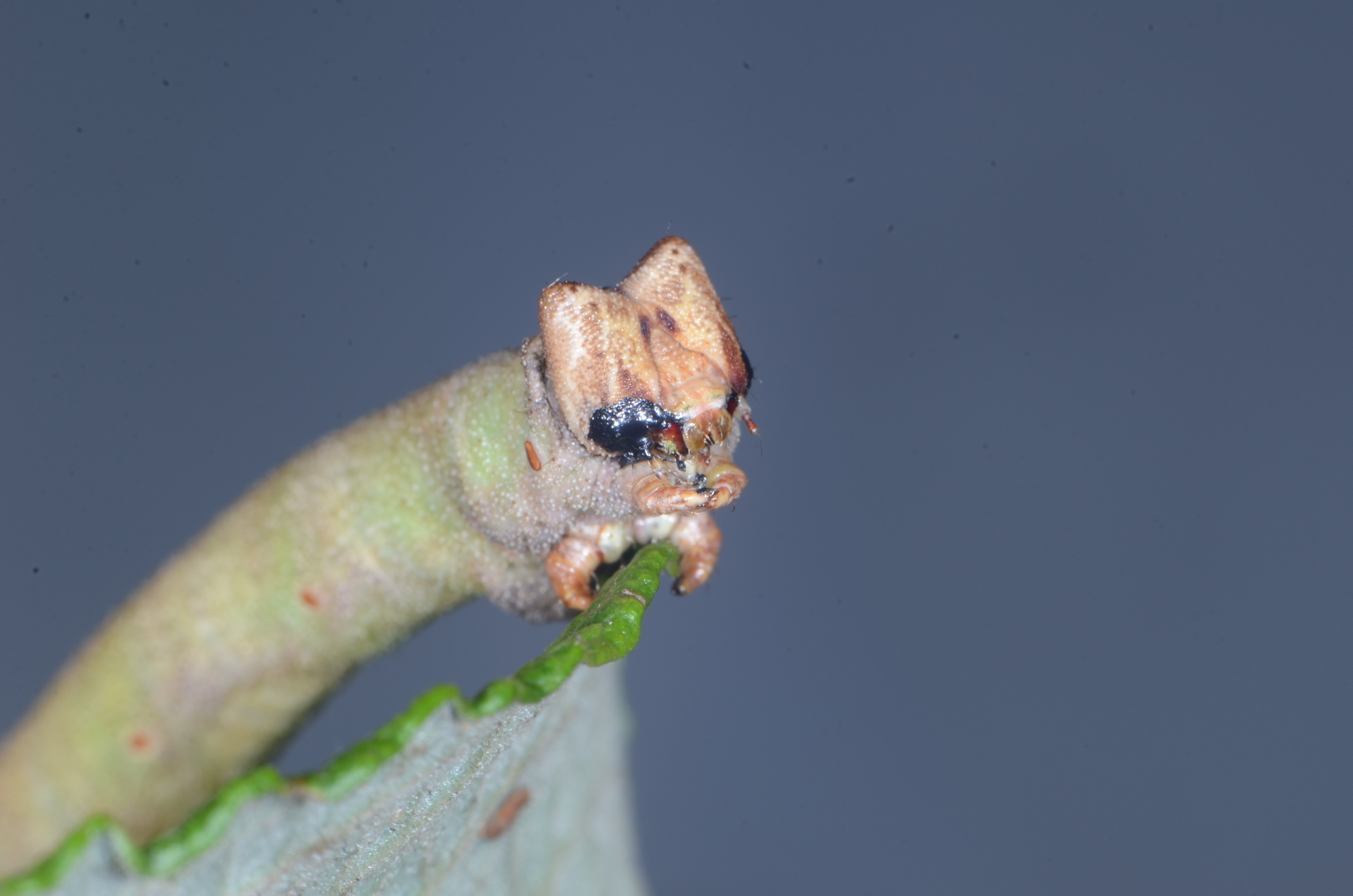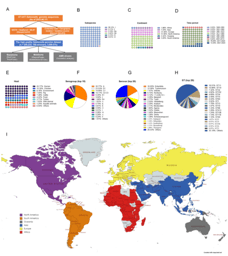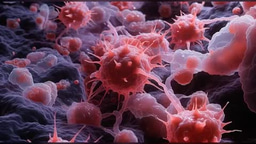Seeing through your skin to better blend in
Published in Ecology & Evolution
Every schoolchild in Britain is familiar with the story of the peppered moth; it’s the textbook example of evolution through natural selection. If you’re not familiar, here’s a summary: during the industrial revolution in the 1800s, air pollution caused the trees to darken. As a result, the speckled, pale-coloured moths that rested there were more easily spotted by predators and the darker, less conspicuous morphs prevailed in the population.
This is all well and good if you are an animal living in a visually stable environment, but what if your environment changes rapidly over space and time and you find yourself needing a faster solution to camouflage? The caterpillars of the peppered moth face this problem on a regular basis. Being wind dispersed as tiny larvae just after hatching, they are able to feed on the leaves of the many types of trees and shrubs that they may happen to land on – but which have very different-looking twigs. They have evolved a number of complementary solutions to this survival challenge. Firstly, they look and pose like twigs. Secondly, they change colour to match the twigs they rest upon. These observations had already been published by Noor et al. when I started my Master’s thesis in Ilik Saccheri’s lab at the University of Liverpool. It was suggested that larvae might be using visual cues to better blend into their environment, but no one had yet tackled the fundamental question – what and how do these caterpillars see?

This question therefore became the main focus of my Master’s, and one year later, my PhD thesis. We began by characterising the genes known to be responsible for colour vision across the animal kingdom: opsins. After identifying opsin genes in the peppered moth, I measured their expression in various tissues of the larvae. I think we were all quite surprised when I produced the PCR results showing that these genes, along with two other visual genes were expressed not only in the head where the eyes are, but also in the skin tissue. Could it be possible that these larvae were seeing colour through their skin? It wasn’t a completely outrageous suggestion. Light detection outside of the eye occurs in lots of animals including snails, Drosophila larvae, geckos, and cuttlefish, but the only evidence of extraocular colour sensing came from the experiments of Sir Edward Bagnall Poulton, a 19th century Oxford University evolutionary biologist. By placing the pupae of small tortoiseshell butterflies in chambers where the head and body were exposed to contrasting colours, Poulton showed that the resulting pupal colour depended on the background colour to which the greatest surface area of skin had been exposed. We therefore suspected that these genes might be functional, but we were sceptical; we needed a way to test it experimentally. I remember sitting in Ilik’s office with the group’s postdoc, Arjen van’t Hof, talking about the ways we could blind caterpillars while causing as little damage and stress to them as possible. We joked around about creating tiny blindfolds and that’s exactly what we did – tiny blindfolds made of black paint.

Once the larvae were suitably blindfolded (how many fingers am I holding up!?), we tested whether they were still able to change colour to match their background to the same extent as those with ocular vision still intact. To do this we reared groups of blindfolded and control larvae in enclosures with painted wooden dowels, a method used previously by Nicola Edmonds, a former PhD student of Ilik. We collaborated with Hannah Rowland, then a University of Cambridge research fellow, who gave us the great idea to model the colour of the larvae from the visual perspective of their most relevant predators, birds. We were once again surprised; blindfolding appeared to have no effect on colour change and blindfolded larvae matched brown, green, black, and white dowels as well as their non-blindfolded siblings and peers.

But wait, there’s more. Instead of changing colour to match their backgrounds, some species of animal show a preference to rest on matching backgrounds to achieve camouflage. Because colour change is energetically costly and in peppered moth caterpillars can take over a week, we next tested whether this was a behaviour that occurred in our experimental larvae. Yep, you guessed it – it was, but not only in larvae with ocular vision. We also found blindfolded larvae resting more frequently on dowels that matched their own colour, as opposed to non-matching colour backgrounds.
Two years of morphological and behavioural evidence from more than 300 larvae, together with the gene expression data, finally convinced us that these larvae are capable of sensing colour without the use of their eyes, as presented in our recently published paper in Communications Biology. We believe that this ability evolved to allow larvae to gain better visual information about their background, particularly when in the typical 45° resting angle during daylight hours when their head is positioned away from the twig. This information then allows larvae to conceal themselves from avian predators by either changing colour to better blend into their environment, or moving to a colour-matching substrate.
Naturally, the story doesn’t end here for the peppered moth. There is still much more to learn about this fascinating adaptation. For example, where exactly are the photoreceptors located? How is the signal integrated from phototransduction to colour change? It is unlikely that this phenomenon is unique to the peppered moth and this discovery will hopefully shed new light on the potential functions of extraocular photoreceptors across other taxa, and their evolutionary origins.

Follow the Topic
-
Communications Biology

An open access journal from Nature Portfolio publishing high-quality research, reviews and commentary in all areas of the biological sciences, representing significant advances and bringing new biological insight to a specialized area of research.
Related Collections
With Collections, you can get published faster and increase your visibility.
Stem cell-derived therapies
Publishing Model: Hybrid
Deadline: Mar 26, 2026
Lipids in Cell Biology
Publishing Model: Open Access
Deadline: Dec 03, 2025



Please sign in or register for FREE
If you are a registered user on Research Communities by Springer Nature, please sign in
link not working
Thanks for spotting - fixed now
Amazing work! CONGRATULATIONS
Amazing work! you tackle all the questions behind this phenomena with great diligence, love the pun: how many fingers am I holding up!?
Hi Amy, fantastic work! I plan on using this study in a biology classroom activity right away. I wanted to ask: is an adult peppered moth's coloration determined by its larval coloration? Or is the caterpillar's color change separate from what determines its adult coloration?
Hi Sara,
Nice to hear that the caterpillars will feature in your classroom! In short: adult colouration is not determined by larval colouration.
The larval colouration is caused by changes in the environment and is reversible/can change during the caterpillars development. In contrast, the adult colouration is genetically-determined and fixed.
Amy
Thank you! I figured as much, but didn't want to make an incorrect assumption.
Cheers,
Sara